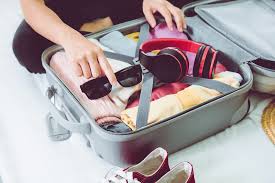Traveling solo can be an exhilarating and transformative experience, allowing you to explore new cultures, meet new people, and embark on adventures at your own pace. However, traveling alone in a diverse and vast continent like Asia requires careful planning and awareness of safety practices. Whether you’re heading to bustling cities, serene beaches, or remote mountain villages, staying safe is crucial for ensuring a smooth and enjoyable journey. This comprehensive guide offers essential travel safety tips for solo travelers in Asia.
1. Pre-Trip Preparation

1.1 Research Your Destination
a. Local Laws and Customs: Before traveling, familiarize yourself with the local laws and customs of the countries you’ll be visiting. Understanding cultural norms and legal requirements can help you avoid misunderstandings and legal issues. For example, some countries have strict dress codes or regulations on behavior that might be different from what you’re accustomed to.
b. Safety Advisories: Check travel advisories from your government or reputable sources. These advisories provide information on potential safety concerns, such as political unrest, natural disasters, or health risks. Websites like the U.S. Department of State or the UK Foreign and Commonwealth Office offer up-to-date travel warnings and advice.
1.2 Health Precautions
a. Vaccinations and Health Insurance: Ensure you are up-to-date on required vaccinations and consider any additional ones based on your destination. Travel insurance is also crucial; choose a policy that covers health emergencies, accidents, and trip cancellations.
b. Medications and Health Supplies: Carry a basic medical kit with essential items like first aid supplies, common medications, and any prescription drugs you may need. Keep medications in their original packaging and bring a copy of your prescription in case you need to refill them abroad.
2. Safety During Your Trip
2.1 Accommodation Safety
a. Choose Reputable Accommodations: Select accommodations with good reviews and ratings from previous travelers. Platforms like TripAdvisor, Booking.com, and Airbnb offer insights into the safety and reliability of various options. Look for properties that have security features such as 24-hour reception, secure entry, and in-room safes.
b. Secure Your Belongings: Use hotel safes or secure your valuables in a lockable luggage bag. When staying in hostels or shared accommodations, keep your belongings close and use a portable lock for lockers if available.
2.2 Transportation Safety
a. Use Trusted Transportation Services: Opt for reputable transportation services, such as licensed taxis or rideshare apps like Uber or Grab. Avoid accepting rides from unlicensed drivers or hitchhiking.
b. Be Cautious with Public Transport: When using public transportation, stay alert and be aware of your surroundings. Keep an eye on your belongings and be cautious of pickpockets, especially in crowded areas.
2.3 Personal Safety Measures
a. Stay Connected: Share your travel itinerary and contact details with a trusted friend or family member. Regularly check in with them to keep them informed of your whereabouts.
b. Avoid Risky Areas: Avoid walking alone at night, especially in unfamiliar or poorly lit areas. Stay away from places known for high crime rates or areas that seem unsafe.
c. Trust Your Instincts: If something feels off or uncomfortable, trust your instincts and remove yourself from the situation. Your intuition is a powerful tool for maintaining your safety.
3. Cultural Sensitivity and Social Interaction

3.1 Respect Local Culture
a. Learn Basic Phrases: Familiarize yourself with basic phrases in the local language. Simple greetings or polite expressions can go a long way in building rapport and showing respect for the local culture.
b. Dress Appropriately: Dress modestly and respectfully according to local customs. In some countries, revealing clothing may be considered inappropriate, so be mindful of local dress codes.
3.2 Social Interaction
a. Be Cautious with Strangers: While meeting new people can be one of the joys of solo travel, be cautious about sharing personal information or accepting invitations from strangers. Always meet in public places and inform someone you trust about your plans.
b. Use Social Media Wisely: Be mindful of what you share on social media. Avoid posting your exact location or travel plans in real-time, as this can compromise your safety.
4. Emergency Preparedness
4.1 Know Emergency Contacts
a. Local Emergency Numbers: Familiarize yourself with local emergency contact numbers for police, medical services, and your embassy or consulate. Keep these numbers readily accessible in case of an emergency.
b. Embassy or Consulate Information: Locate the nearest embassy or consulate for your home country. Register with them if required, and know their contact details in case you need assistance.
4.2 Safety Apps and Resources
a. Safety Apps: Install safety apps on your smartphone, such as emergency contact apps, navigation tools, and travel safety apps. These can provide real-time alerts and help you navigate unfamiliar areas.
b. Offline Maps: Download offline maps of your destination to ensure you have access to navigation tools even without an internet connection.
5. Food and Water Safety

5.1 Eat Safely
a. Choose Reputable Restaurants: Eat at reputable restaurants and avoid street food from vendors with questionable hygiene practices. Look for places with high customer turnover and clean food preparation areas.
b. Be Cautious with Water: Drink bottled or purified water to avoid waterborne illnesses. Avoid consuming ice or uncooked foods that may have been prepared with tap water.
6. Travel Documentation and Money
6.1 Keep Documents Secure
a. Make Copies: Make photocopies or digital copies of important documents such as your passport, visa, travel insurance, and credit cards. Store these copies separately from the originals in case of loss or theft.
b. Use a Money Belt: Consider using a money belt or hidden pouch to keep your cash, cards, and important documents secure and out of sight.
6.2 Manage Your Finances
a. Notify Your Bank: Inform your bank or credit card company of your travel plans to avoid any issues with using your cards abroad. Be aware of any foreign transaction fees and consider carrying a small amount of local currency.
b. Monitor Your Accounts: Regularly check your bank and credit card statements for any suspicious activity. Report any unauthorized transactions immediately.
Conclusion
Solo travel in Asia can be a rewarding and enriching experience, but it requires careful planning and attention to safety. By following these essential travel safety tips, you can ensure a smooth and enjoyable journey while minimizing risks. Remember to stay informed, be cautious, and trust your instincts as you explore the diverse and vibrant destinations across Asia. With the right preparation and awareness, you can focus on making the most of your solo adventure and creating unforgettable memories. Safe travels!



